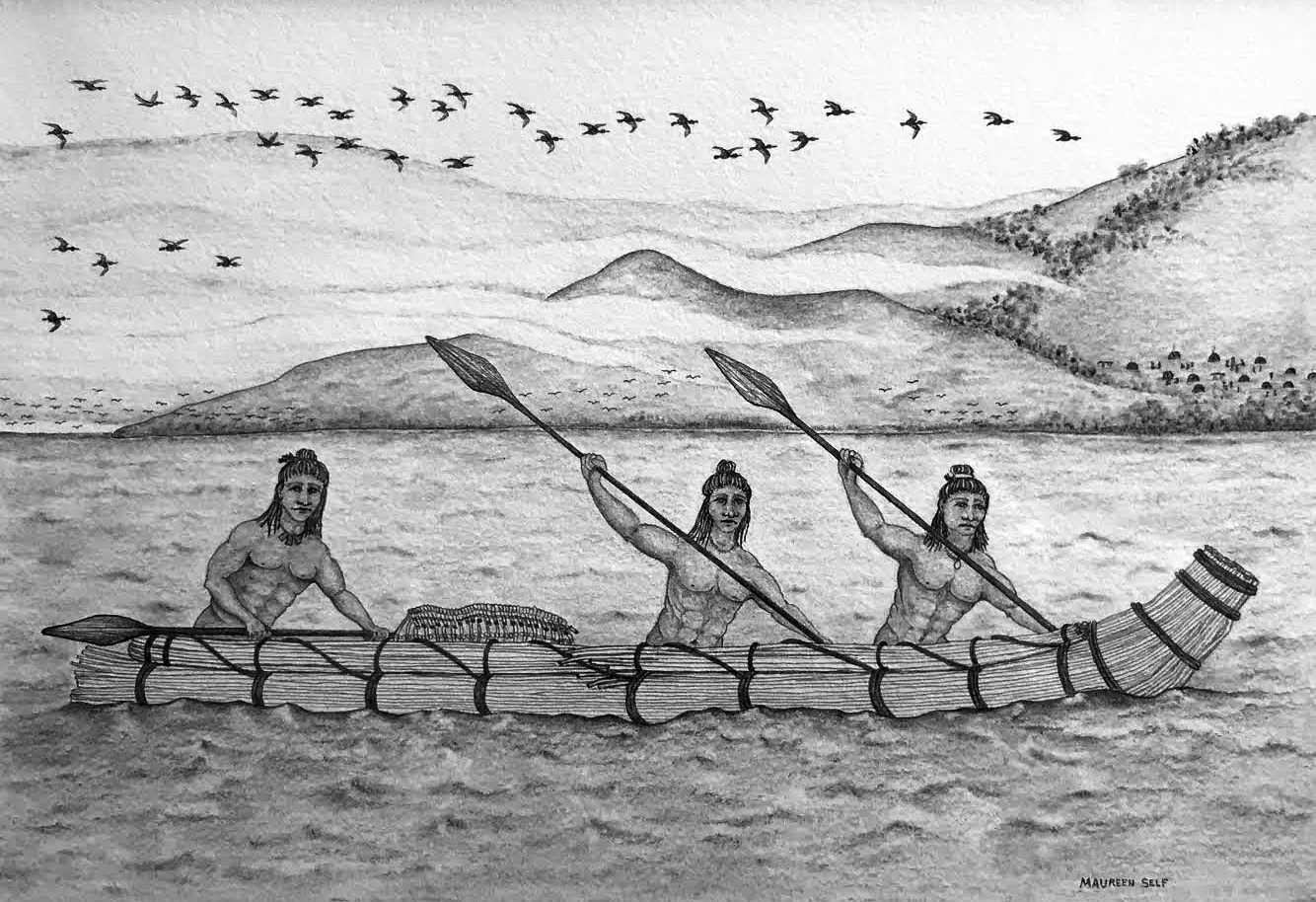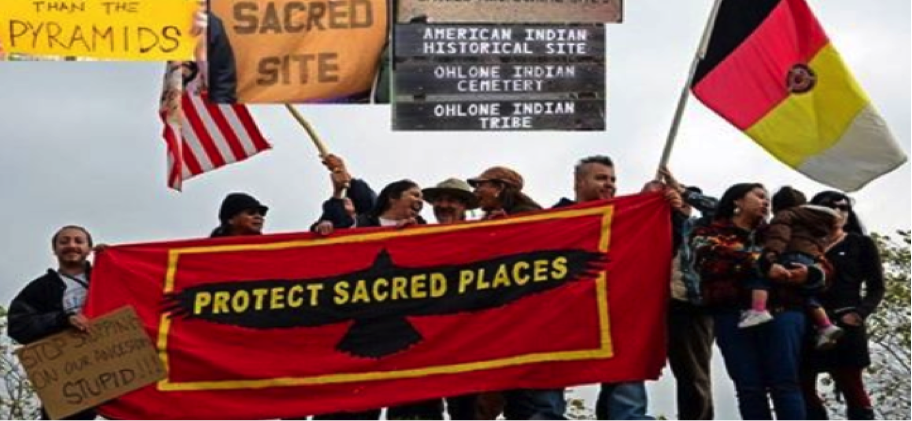West Berkeley Shellmound Project




At the time of first contact, a great mound—taller than a two-story building and more than 300 feet long—rose dramatically from the flatlands of Berkeley at the mouth of Strawberry Creek. The West Berkeley Shellmound marks the site of a village first settled nearly 5,000 years ago and is generally regarded as the earliest human habitation on the shores of San Francisco Bay. Among the oyster, clam, mussel shells, and ashes from household and ceremonial fires that comprised much of the volume of the mound were scatterings of bone awls, stone weights for fishing nets, mortars and pestles, bird-bone whistles, arrowheads, stone scrapers, bone harpoon points, and other discarded tools and implements of daily life.
California ICAN is collaborating with a number of other Bay Area institutions to bring rich knowledge to the public and present it in a way that helps us better understand the land we live on and learn to live full and creative lives. While focused on the past it is very much about the future, with information and insights that will inform us more deeply of what it means to live well in a constantly changing world.
The early Anglo residents of Berkeley, however, valued it neither as a sacred site nor as a record of 5,000 years of cultural evolution and environmental change. As factories, shops, and residences were built, the last signs of the shellmound were obliterated, and today there is no visible sign of it left. It has long ago been leveled and paved over to become the parking lot for Spenger’s Fish Restaurant.
Fortunately, this is not the end of the story. At the beginning of the twentieth century, the fledgling UC Berkeley anthropology department started developing concepts and techniques that would come to define modern archaeology. Although much of the research was salvage work done in advance of a steam shovel scheduled to level part of of the mound, over the decades a substantial body of research papers accumulated and some 3,400 artifacts were collected, sorted, and stored in the back rooms of the Phoebe Apperson Hearst Museum at UC Berkeley where they currently reside.
It is our great pleasure to help create what we feel will be a major gift to the people of the Bay Area—an understanding of the environmental and cultural changes of our region over the last 5,000 years and an appreciation of the skills, artistry, and abiding rights of the Native people who inhabited this village site for millenia. The project, scheduled for completion in early 2019, is well underway and has many branches.
- West Berkeley Shellmound Site: In 2003, the West Berkeley Shellmound was declared eligible to be placed on the National Registry of Historic Places. Despite this designation, it was zoned for residential and commercial development, and a five-story commercial and condo development, extending several stories underground, is proposed to be built. We have been active in the efforts to prevent the misuse of this land and have been engaged with the Indian community in their efforts to stop the development and turn the site into a memorial for the past and a cultural asset for the present.
- Book: We are working on a major book about the West Berkeley Shellmound and village, to be authored by Malcolm Margolin and Kent Lightfoot, Professor of Anthropology at UC Berkeley, with the substantial support of the Phoebe Apperson Hearst Museum’s Director Benjamin Porter and researchers, curators, and other staff. It will feature specially commissioned illustrations by the Maidu Indian artist Maureen Self, artful photographs by photographer Dana Davis, and sidebars featuring quotes, excerpts, maps, and carefully selected statements by researchers, native activists and scholars, historians, and others. By Spring 2019, we will have a lively, luxuriously illustrated, beautifully designed book that will cover the sweep of human habitation in the Bay Area from the late Pleistocene Era (some 12,000 years ago) to the present.
- New Research: An unexpected but major benefit of this project is that it brought about a re-examination of the artifacts and soil samples collected from the mound in 1950. Several researchers are engaged in an exciting cutting-edge analysis of plant pollen, which lets us know more about the vegetation of the past; tiny, jewel-like, herring vertebrae nearly 5,000 years old, which convey the surprising fact that the earliest people here had fine-mesh nets and the maritime skills to use them; and tiny snail shells that attach themselves to specific species of seaweed. Although the seaweed decayed long ago, the snail shells provide evidence not only about what kind of seaweed was eaten, but because some seaweeds are seasonal, the snail shells cast insight into when during the year people occupied the site. This new research is expanding our knowledge of the past and leading us to challenge long-held assumptions.
- Exhibitions and Outreach: The little known but thoroughly engaging story of the dramatic environmental and cultural changes to the shellmound, plus the passion of contemporary Indian people for whom this site is a holy land is resulting in a dynamic schedule of well-attended exhibitions and events. See “Past Events” on the Events page of this website for a sample of what we have done in the last few months. More is being planned for the months ahead, and when the book is published in the Spring of 2019, we have commitments from museums, advocacy groups, cultural centers, university departments, media, and others to launch exhibits, sponsor events, and otherwise work with us to promote the book and its contents as widely and deeply as possible.
West Berkeley Shellmound Campaign

Known as “Berkeley’s Standing Rock,” the West Berkeley Shellmound is being threatened by a proposed 5-story commercial and condo development, extending several stories underground, into the heart of the oldest village site along the San Francisco Bay—and all that lies within. This designated historic landmark is a continuing sacred site for the Ohlone people and a 5,000 year old center of the Bay’s oldest human history. Join us to stand with the Ohlone people in:
- Actions to protect the Bay’s oldest unexcavated site of its first civilization; and
- Creating an environmentally and culturally restorative open space at the site.
To learn more about the West Berkeley Shellmound Campaign, visit their Facebook page, their website, www.Shellmound.org, and the article Assault Begins on West Berkeley Shellmound Site.
